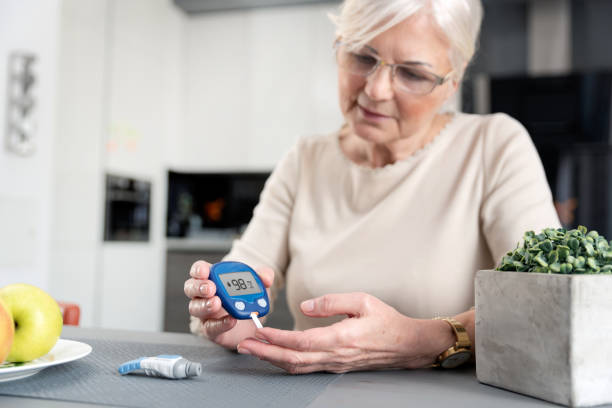Diabetes is a chronic condition that affects millions of seniors worldwide, often leading to complications such as impaired mobility, muscle weakness, and even nerve damage. While medical management through medications and lifestyle changes remains crucial, physical therapy can play a transformative role in enhancing the quality of life for older adults living with diabetes. From improving mobility to managing pain and increasing strength, physical therapy is essential to diabetes management, especially for seniors.
Contents
Understanding the Impact of Diabetes on Seniors

Diabetes, particularly Type 2, is a prevalent condition among seniors. The body’s ability to produce or use insulin effectively decreases with age, which can lead to uncontrolled blood sugar levels. Over time, this can cause a wide array of complications, including:
- Peripheral Neuropathy: This condition leads to numbness, tingling, or pain, usually in the feet or hands. It can severely affect balance and mobility.
- Cardiovascular Issues: Diabetes increases the risk of heart disease and stroke, which can reduce stamina and make physical activity more challenging.
- Joint and Muscle Pain: As blood circulation worsens, joint stiffness and muscle weakness can become more prominent, making everyday activities difficult.
- Reduced Mobility: Many seniors with diabetes struggle with decreased range of motion, making it hard to stay active and maintain independence.
Given these challenges, a well-rounded approach to diabetes care must address both medical and physical needs.
How Physical Therapy Helps Manage Diabetes
Physical therapy offers seniors a comprehensive solution to many diabetes-related complications. Through tailored exercises and hands-on treatments, physical therapy can help seniors improve their strength, balance, and overall mobility, significantly reducing the risk of falls and injuries.
Here’s how physical therapy can benefit seniors with diabetes:
- Improves Blood Circulation: Regular physical activity, such as low-impact exercises like walking, cycling, or swimming, can help improve circulation, especially in the lower extremities. Better circulation reduces the risk of foot ulcers and infections—a common concern for diabetics.
- Increases Strength and Flexibility: Physical therapy exercises build muscle strength and improve joint flexibility. This is particularly important for seniors who may experience muscle weakness and stiffness due to diabetes. Increased strength allows seniors to perform daily tasks with greater ease and confidence.
- Enhances Balance and Coordination: Peripheral neuropathy often causes seniors to lose balance, making them more prone to falls. Physical therapists can guide seniors through balance and coordination exercises to improve stability, reducing the risk of falls and related injuries.
- Manages Pain: Physical therapists use various techniques such as massage, stretching, and heat therapy to alleviate diabetes-related pain, particularly in the joints and muscles. This can help seniors remain active and mobile without being hindered by discomfort.
- Supports Weight Management: Maintaining a healthy weight is crucial for managing diabetes, as excess weight can worsen insulin resistance. Physical therapists can create personalized exercise programs that promote healthy weight loss, improve blood sugar control, and reduce diabetes-related complications risk.
- Promotes Independence: One of the most significant benefits of physical therapy is its ability to help seniors maintain their independence. By improving strength, flexibility, and balance, seniors can remain active and carry out daily activities such as dressing, cooking, and walking without relying on others.
Tailored Programs for Senior Diabetic Patients
Physical therapy for diabetes isn’t a one-size-fits-all approach. Seniors have varying needs based on their overall health, the severity of their diabetes, and their physical limitations. A physical therapist will conduct a thorough assessment to understand the senior’s condition and develop a customized treatment plan that addresses their specific challenges.
Common elements of a physical therapy program for seniors with diabetes include:
- Aerobic Exercises: Light to moderate exercises, such as walking or stationary cycling, can help improve cardiovascular health, promote circulation, and aid in weight management.
- Strength Training: Targeted exercises to strengthen the muscles, especially in the legs and core, are crucial for enhancing mobility and balance.
- Balance Training: Exercises such as standing on one leg or using balance boards can help improve stability, reducing the risk of falls.
- Flexibility Exercises: Gentle stretching exercises improve joint flexibility, which is essential for maintaining range of motion and reducing stiffness.
- Education on Foot Care: For seniors with diabetes, foot health is of utmost importance. Physical therapists can teach proper foot care techniques to prevent ulcers and infections, which are common due to poor circulation.
The Role of Caregivers and Family Support
Family members and caregivers also play a vital role in supporting seniors through their physical therapy journey. Encouragement, reminders to stay active, and assistance with exercises can go a long way in ensuring seniors stay committed to their therapy routine. Engaging in physical therapy alongside medical treatments creates a holistic approach to diabetes management.
Conclusion
Diabetes can significantly impact the quality of life for seniors, but it doesn’t have to. With the right physical therapy plan, older adults can regain control over their mobility, reduce pain, and maintain their independence. Physical therapy is not just about exercise; it’s about empowering seniors to live healthier, more active lives, even with a chronic condition like diabetes.
Whether it’s improving balance, managing pain, or building strength, physical therapy is a key component in the overall care plan for seniors living with diabetes. If you or a loved one is managing diabetes, consult a physical therapist to explore how customized therapy can make a difference.
If you are in need of physical, occupational, or speech therapy services, please contact us at (920) 252-4442. We look forward to hearing from you.
